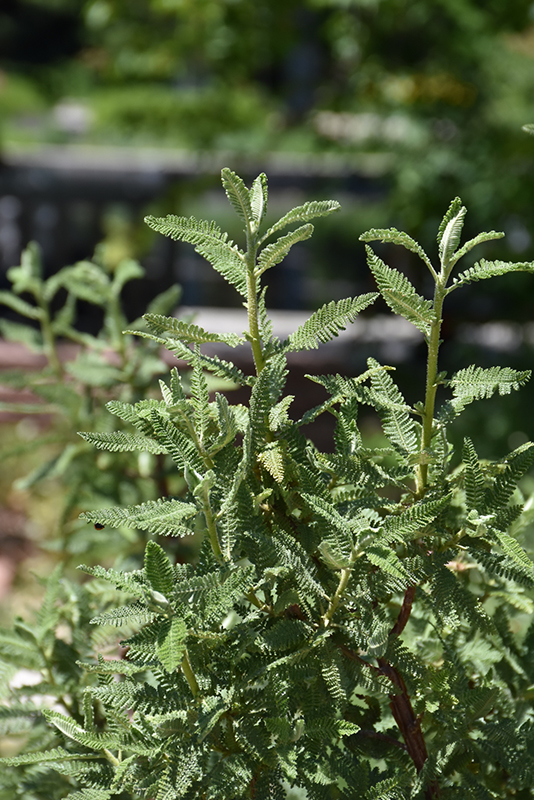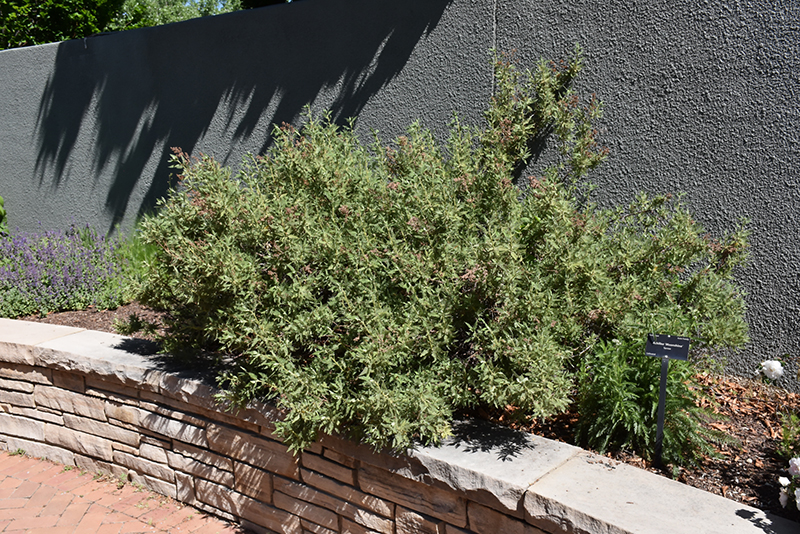Height: 5 feet
Spread: 5 feet
Sunlight:
![]()
![]()
Hardiness Zone: 4b
Other Names: Desert Sweet, Sweetbush
Description:
A densely branched, aromatic shrub with interesting fern-like foliage, presenting a profusion of showy white flower clusters from mid-summer to fall, leaving persistent, ornamental bronze seed heads; evergreen in mild climates; highly adaptable
Ornamental Features
Fernbush features showy clusters of fragrant white flowers with buttery yellow eyes at the ends of the branches from mid to late summer. It has attractive grayish green deciduous foliage. The small fragrant ferny bipinnately compound leaves are highly ornamental but do not develop any appreciable fall color. It features abundant showy coppery-bronze capsules from mid fall to mid winter. The smooth brown bark adds an interesting dimension to the landscape.
Landscape Attributes
Fernbush is a dense multi-stemmed deciduous shrub with an upright spreading habit of growth. Its relatively fine texture sets it apart from other landscape plants with less refined foliage.
This is a relatively low maintenance shrub. Trim off the flower heads after they fade and die to encourage more blooms late into the season. It is a good choice for attracting bees and butterflies to your yard, but is not particularly attractive to deer who tend to leave it alone in favor of tastier treats. It has no significant negative characteristics.
Fernbush is recommended for the following landscape applications;
- Mass Planting
- Hedges/Screening
- Rock/Alpine Gardens
- General Garden Use
Planting & Growing
Fernbush will grow to be about 5 feet tall at maturity, with a spread of 5 feet. It has a low canopy, and is suitable for planting under power lines. It grows at a slow rate, and under ideal conditions can be expected to live for approximately 10 years.
This shrub does best in full sun to partial shade. It prefers dry to average moisture levels with very well-drained soil, and will often die in standing water. It is considered to be drought-tolerant, and thus makes an ideal choice for xeriscaping or the moisture-conserving landscape. This plant should not require much in the way of fertilizing once established, although it may appreciate a shot of general-purpose fertilizer from time to time early in the growing season. It is not particular as to soil pH, but grows best in poor soils. It is somewhat tolerant of urban pollution. This species is native to parts of North America..

